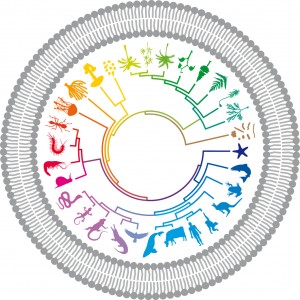
Vetulicolians, extinct for some 500 million years, are the very embodiment of an ‘enigmatic taxon’, looking quite unlike any creature living today. Since the first fossils were discovered in China by Degan Shu and co-workers over a decade ago, vetulicolians have been suggested to be arthropods, lobopodians, kinorhynchs and deuterostomes (their discoverers preferring the latter interpretation). Which is to say, they could be the distant relative of anything from a crustacean to a sea urchin. Given the limited data available from the fossil record, this debate has made little progress in the decade since it began, leading some to suggest that vetulicolians are so unlike any extant taxa that attempts to fit them into the tree of life are doomed to failure.
In palaeontology, of course, it can take only the discovery of a new fossil to resolve such controversies. In a BMC Biology article published today, Degan Shu and colleagues present new fossil finds that allow a better understanding of the vetulicolian body plan. In particular, the structure of the distinctive series of openings along the side of the vetulicolian body is far clearer in these new fossils. The pattern revealed, of serially repeated openings into the body cavity, is very much like the arrangement of pharyngeal gill slits in deuterostomes. This then, is the best evidence yet that vetulicolians are indeed deuterostomes.
The end of the controversy then? Apparently not. Shu and colleagues go on to suggest that vetulicolians might be stem deuterostomes; that is, that the first deuterostomes looked somewhat like vetulicolians. Given that the split between protostomes and deuterostomes is one of the major events in the history of life, this would be a significant finding. However, in an accompanying BMC Biology commentary, Andrew Smith argues that important as they are, the new fossil finds will not be enough to silence the opposition to this view, and while vetulicolians do now seem likely to be deuterostomes, their exact placement within this group remains enigmatic.
Christopher Foote
Latest posts by Christopher Foote (see all)
- Cambrian problematica, now less enigmatic but no less controversial - 2nd October 2012
Comments